Half-Moon Conure Species Profile
The Half-moon conure is a medium-sized dwarf parrots species that is known for its excitable personality and for being a little quieter than some other conures. Like most birds, half-moon conures need a lot of social interaction, exercise, and mental stimulation, but they can make a great pet for the right person.
Species Overview
Common Name(s): Half-moon conure, half-moon conure, orange-fronted conure, orange-fronted parakeet
Scientific Name: Eupsittula canicularis, previously Aratinga canicularis
Adult Size: 9.5 inches and about 75 grams
Life Expectancy: About 20 years
Origin and History
Half-moon conures are native to Mexico and Costa Rica where they live in large flocks of up to 100. They can be found in treetops, lowlands, and even savannahs in these large groups, except during the mating season when they pair off.
They are unique because they nest on termite mounds or in abandoned woodpecker holes. The half-moon conure is not an endangered species so they are sometimes found as pets, but are not as popular as other types of conures.
Temperament
Half-moon conures are very active birds and love to play and climb. A well-socialized bird will enjoy attention from its owner and is typically good-natured.
They are not as excited about bathing as some other birds but may enjoy an occasional misting of water. Half-moon conures are typically not as destructive as some other conures and parrots can be.
Speech and Vocalizations
These birds are quiet when compared to some other conures, but they will still make noise. Their volume is lower, however, so they are a good option if you want a medium-sized bird that isn't too chatty. They are not known to be talkers but may mimic some sounds.
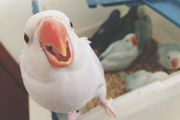
Half Moon Conure Colors and Markings
These conures are primarily a bright green with their back and wing feathers gradually turning into emerald green. They have a naked eye ring like macaws, a horn colored beak instead of a black one, and an orange band just above their beak with a blue forehead. Both males and females have the same colorations.
Caring for the Half Moon Conure
Like most conures, the half-moon variety needs a lot of attention and space. A cage will keep them safe, but that is not the only space they should have access to with supervision.
Regular veterinary care should also be provided to help keep a conure healthy and promptly spot any potential health issues. Birds often hide symptoms of disease until they are severely ill.
Common Health Problems
Birds from warm climates are prone to getting chilled and coming down with respiratory issues, but dirty environments can also cause problems for half-moon conures.
Aspergillosis, pneumonia, and other respiratory issues are the most commonly seen health problems, but liver and behavioral issues can also occur if a proper diet and exercise are not provided.
Clean environments, good nutrition, lots of space, and time for activities can help prevent some common conditions from occurring in a half-moon conure.
Diet and Nutrition
Half-moon conures should ideally eat a high quality, formulated bird pellet as their base diet. This can be supplemented with a seed mixture, fresh fruits, vegetables, and healthy treats like sugar-free cereal, pasta, and whole-grain bread.
Changing the types of fruits and vegetables offered on a daily basis can provide some variety and mental stimulation to a bird as well.
Exercise
Like most birds, half-moon conures need a lot of exercise and space to stretch their wings. Safe flight areas are ideal, but time outside a cage should be provided daily regardless to allow a bird to explore, play with toys, climb, and be mentally stimulated.
A cage should only be for secure housing when supervision is not possible. Otherwise, cage toppers, play gyms, flight areas, and other spaces should be made available to a bird.
Quiet compared to other conures
Not very destructive
Not as colorful as some conures
Does not typically talk
Where to Adopt or Buy a Half Moon Conure
Half-moon conures are not as common as some other types of pet birds, so it will take a little more work if you are looking to adopt or purchase one. Some bird specific stores and larger pet retailers may have these birds available, but rescuing one from a reputable bird rescue or purchasing one from a breeder are your more likely options.
Talk to your local avian veterinarian, bird stores, and check out websites like PetFinder.com and PEAC.org during your search.
More Pet Bird Species and Further Research
If you’re interested in similar species, check out:
- Sun Conure Bird Species Profile
- Jenday Conure Bird Species Profile
RECOMMENDED NEWS
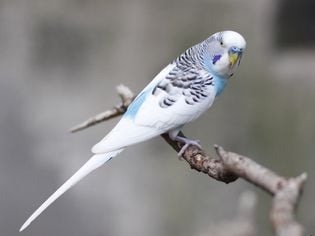
What Are the Differences Between Parakeets and Budgies?
The truth is that parakeets and budgies are actually one and the same. The birds that we commonly c...
Read More →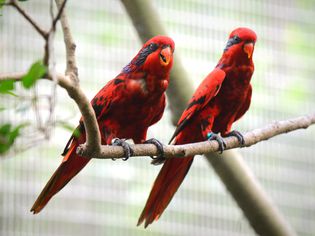
Red Lory (Moluccan Lory): Bird Species Profile
The Red Lory (Eos bornea), also known as the Moluccan Lory, is a small parrot with a big personal...
Read More →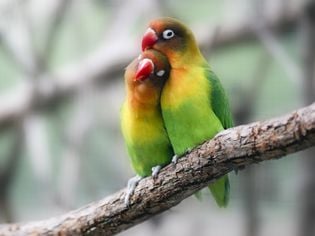
Lovebird Breeding Basics
Lovebirds are a small type of parrot that are green in the wild but have many color mutations in va...
Read More →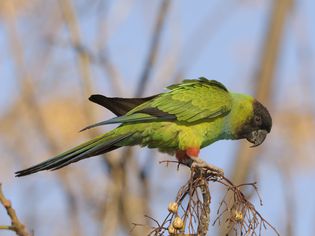
Black-Hooded Parakeet (Nanday Conure): Bird Species Profile
The nanday parakeet (formerly called black-hooded parakeet) is not a quiet bird, but it is a popula...
Read More →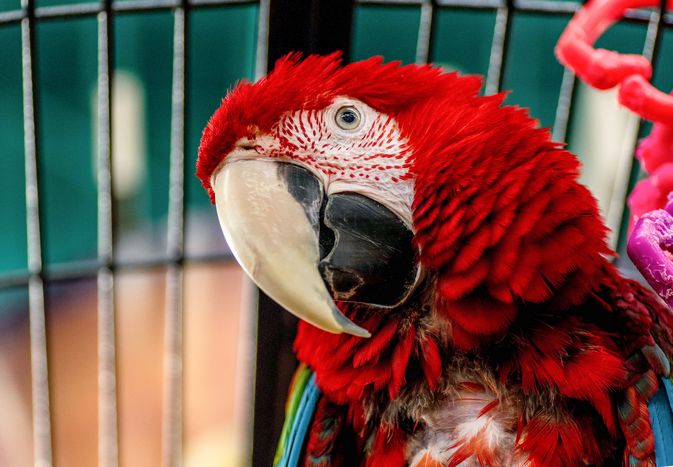
How Long Do Parrots Live?
Parrots and other birds can live up to 10 to 50 years or more, depending on the species and the con...
Read More →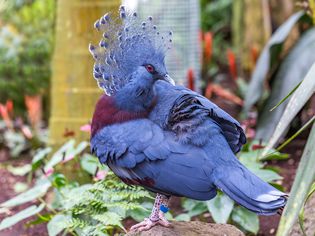
Victoria Crowned Pigeon: Bird Species Profile
Strikingly beautiful and intelligent, the Victoria crowned pigeon is a fascinating ground bird to w...
Read More →
Green-Wing Macaw (Red and Green Macaw): Bird Species Profile
Second in size only to the hyacinth macaw, which is the largest parrot species, the green-wing maca...
Read More →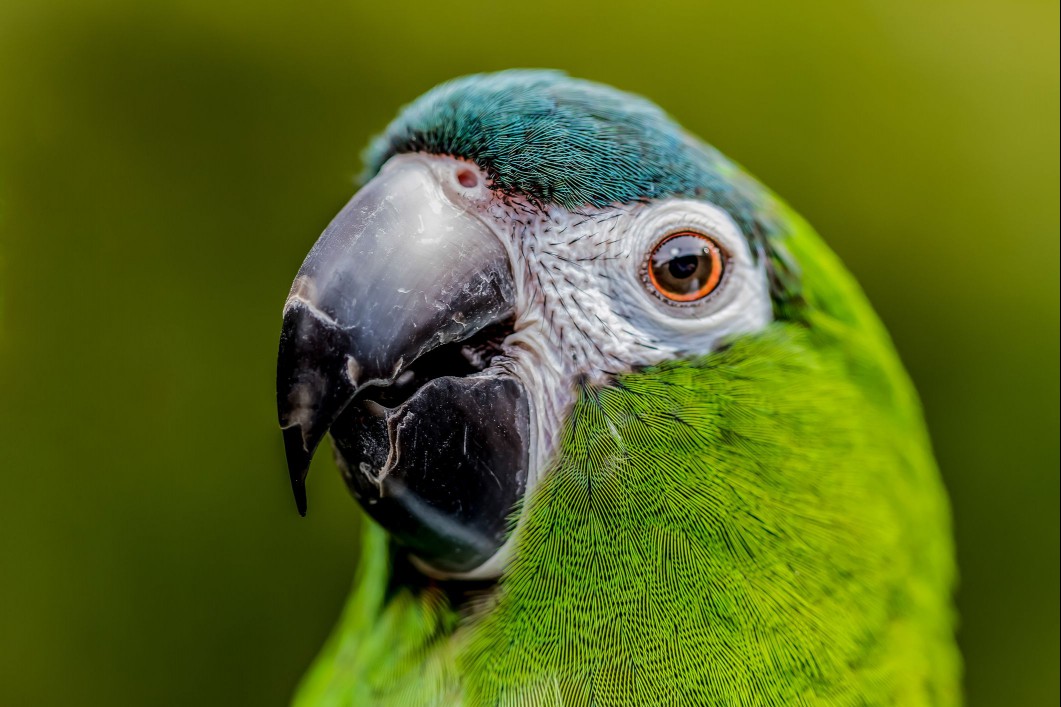
Hahn's Macaw (Red-Shouldered Macaw): Bird Species Profile
Hahn's macaws are the smallest and the most popular among the miniature macaws. These compact ...
Read More →
Plants That Are Safe for Pet Birds
The houseplants we use to brighten our homes aren't always safe for those who have pet birds, a...
Read More →
Comments on "Half-Moon Conure Species Profile" :